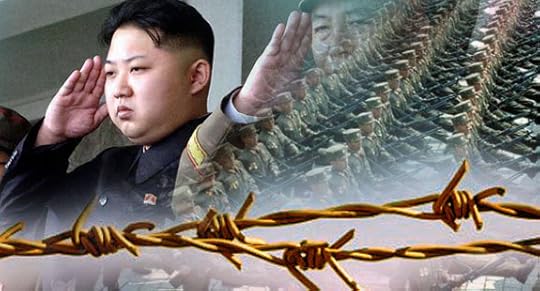“Abandon All Hope Ye Who Enter Here”

“Abandon All Hope Ye Who Enter Here” | Brian O'Neel | Catholic World Report
Hellish conditions in North Korea’s prison camps enable the Kim dynasty to maintain its stranglehold on the impoverished country.
As far as anyone knows, the gates of North Korea’s notorious gulags, or kwalliso, do not have the words “Arbeit Macht Frei” (“Work makes you free”) emblazoned above them, as the ones to Auschwitz did, or, as did the entrance to hell in Dante’s Divine Comedy, the admonition, “Abandon all hope ye who enter here.”
No, the gates of North Korea’s gulag archipelago—which imprisons an estimated 200,000 men, women, and children at any given time—don’t have these inscriptions, but they may as well. For the authorities in the kwalliso will work you hard, and the “freedom” this brings is almost certain death. Indeed, for most inmates, there is no hope of seeing the outside ever again.
Percentage-wise, the kwalliso population—200,000 people out of a nation of 24 million—amounts to roughly the same as the percentage of American citizens who are incarcerated, that is, slightly less than 1 percent.
However, North Korea’s prison population includes many who have no idea why they are there. Some were taken in the middle of the night with no explanation, no arraignment, and no trial. It includes people guilty of crimes such as singing songs they didn’t know are forbidden, or speaking carelessly in a public place.
It also includes people whose only crime is being related to an accused criminal, and children who innocently made politically incorrect remarks in public.
Perhaps the biggest difference, though, is that our American prison system does not experience an estimated 20-40 percent annual mortality rate. And yet, even with 40,000-80,000 inmates dying each year from starvation, physical abuse, disease, and execution, the population in the kwalliso (pronounced “kwah-lee-soh”) stays steady at 200,000. It has to. These camps are a critical piece in the totalitarianism puzzle that allows the Kim dynasty—the first dynasty in the history of communism—to stay in power.
History of the kwalliso
At the conclusion of the Korean Conflict (1950-53), Kim Il Sung, founder of the Democratic People’s Republic of Korea (DPRK), initiated a series of brutal purges to weed out both potential rivals and anyone who would actively question his vision or decisions.
By the late 1950s, most of those swept up in these internecine conflicts were either dead or in concentration camps. These institutions were not the same as today’s kwalliso, however. Their purpose simply was to segregate those who could undermine the regime by “infecting” the general population.
By 1958, however, Kim had decided this was not enough. So much did he fear any dissent in the “Hermit Kingdom” (so-called because of its utter isolation), he ordered a complete ideological profile worked up on every one of his nation’s 9,864,000 people.
Every friend, every family member, ancestry, family connections, their connections’ connections—each relationship was studied. Anything indicating imperialist, reactionary, or counter-revolutionary relations or tendencies was grounds for torture, and then execution or imprisonment.
Carl E. Olson's Blog
- Carl E. Olson's profile
- 20 followers



